In 2007, I flew to Arizona to test ride a new motorcycle with a strange name and a cutting-edge innovation. The name was the Aprilia Shiver and the innovation was a ride-by-wire throttle.
Instead of cables tugging on mechanical parts, as had been used for decades, the Shiver (second in the U.S. market only to the 2006 Yamaha YZF-R6) used electronics to tell the ECU how hard the rider was twisting the throttle. My verdict? Ride by wire worked well enough, if not perfectly. I didn’t see it as a selling point, and I didn’t foresee where it would lead. Ride by wire opened the door to more important advances, such as traction control, and eased convenience features, such as cruise control.
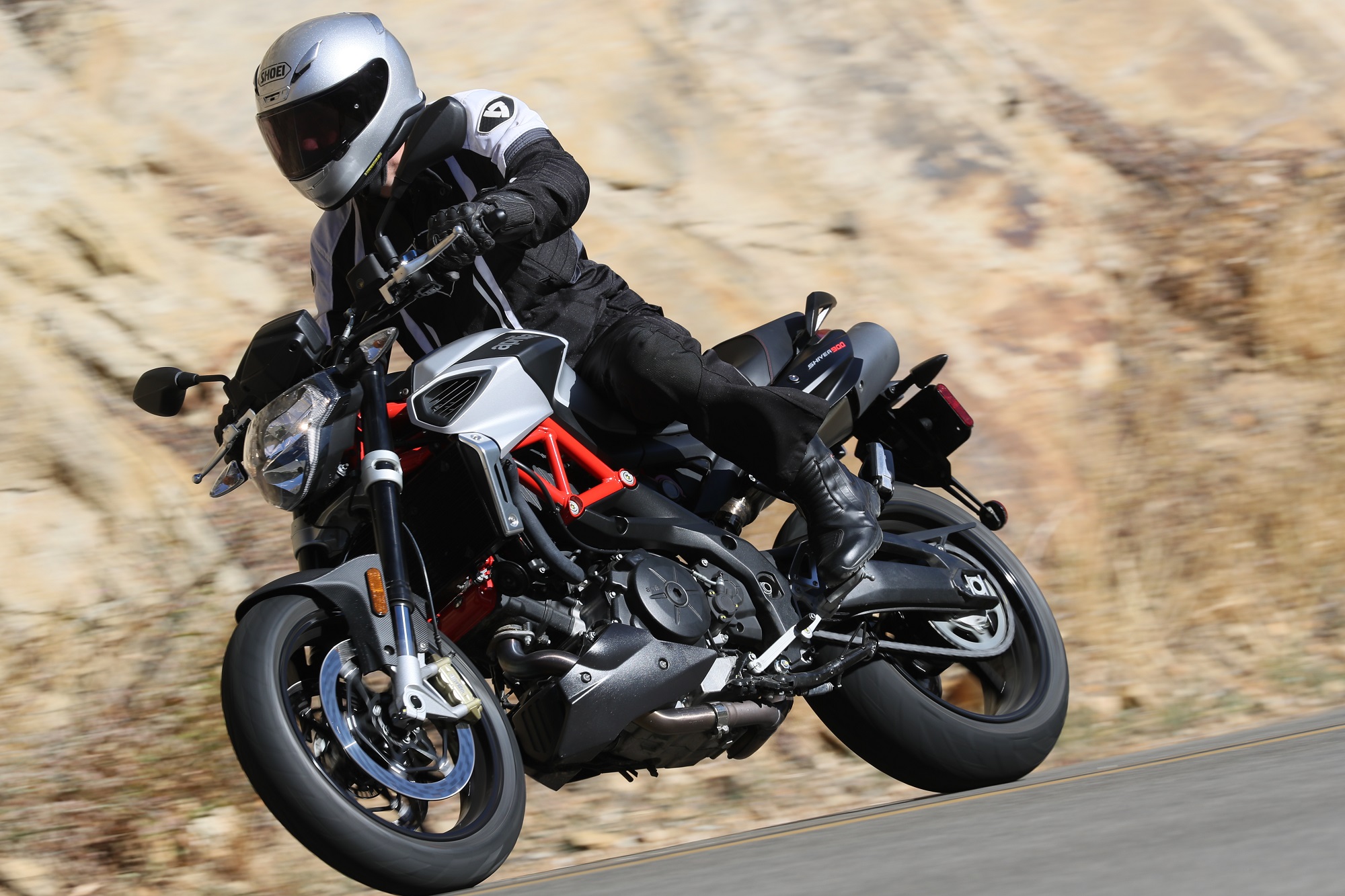
The 2018 Aprilia Shiver 900. Photo by Brian J. Nelson.
This month, almost exactly 10 years later, I few to Southern California to ride the Shiver once again, now that it was finally updated. The 2018 version has many features I never expected back in 2007: anti-lock brakes, multi-setting traction control, multiple ride modes and a flashy TFT full-color instrument panel.
And here’s the last part I didn’t foresee: Despite all the added technology, as well as increased torque, the MSRP for the new Shiver is $9,399, only $400 more than it was a decade ago. So let’s see how the new Shiver works.
2018 Aprilia Shiver 900 on the spec sheet
The main change Aprilia made to the new Shiver was to lengthen the stroke 11 mm on the liquid-cooled, four-valve, 90-degree V-twin, increasing displacement to 896 cc. Aprilia claims 95 horsepower and 66 foot-pounds of torque. The longer stroke was done mainly to improve torque, said the Aprilia reps.
Every engine has its own character, and while I don’t always prefer V-twins, I enjoyed the Shiver’s new engine. The torque provided smooth power delivery with just enough vibration to remind me I was on a twin, but never enough to bother me. Though the transmission is the same in both the Shiver and its sister bike, the Dorsoduro 900, which uses the same engine, Aprilia went up one tooth on the front sprocket to give the Shiver a more relaxed feel at highway speeds. The sum total is a bike that provides ample power but still feels friendly when delivering it.
That feeling is enhanced by the fueling. Ten years ago, I thought the response from the new ride-by-wire throttle felt different, but not so much that an owner wouldn’t quickly get accustomed to it, after which it would be transparent. Now, I have no complaints or doubts about the throttle response at all. Aprilia gave the Shiver the same Marelli 7 SM electronic engine management unit that’s used in the more expensive and higher performance V-fours. The result is smooth fueling with no abrupt, off-idle transitions or twitchiness.
That’s true in all three rider modes: Sport, Tour and Rain. Unlike some motorcycles, which feel twitchy and just harder to ride in the sportiest mode, the Shiver was smooth in Tour or Sport. The latter provides a little more immediacy to the throttle response, but unless you’re trying to do wheelies, I didn’t find the difference to be huge.
In addition to the rider modes, the Shiver lets you choose from three levels of traction control, and you can also turn it off.
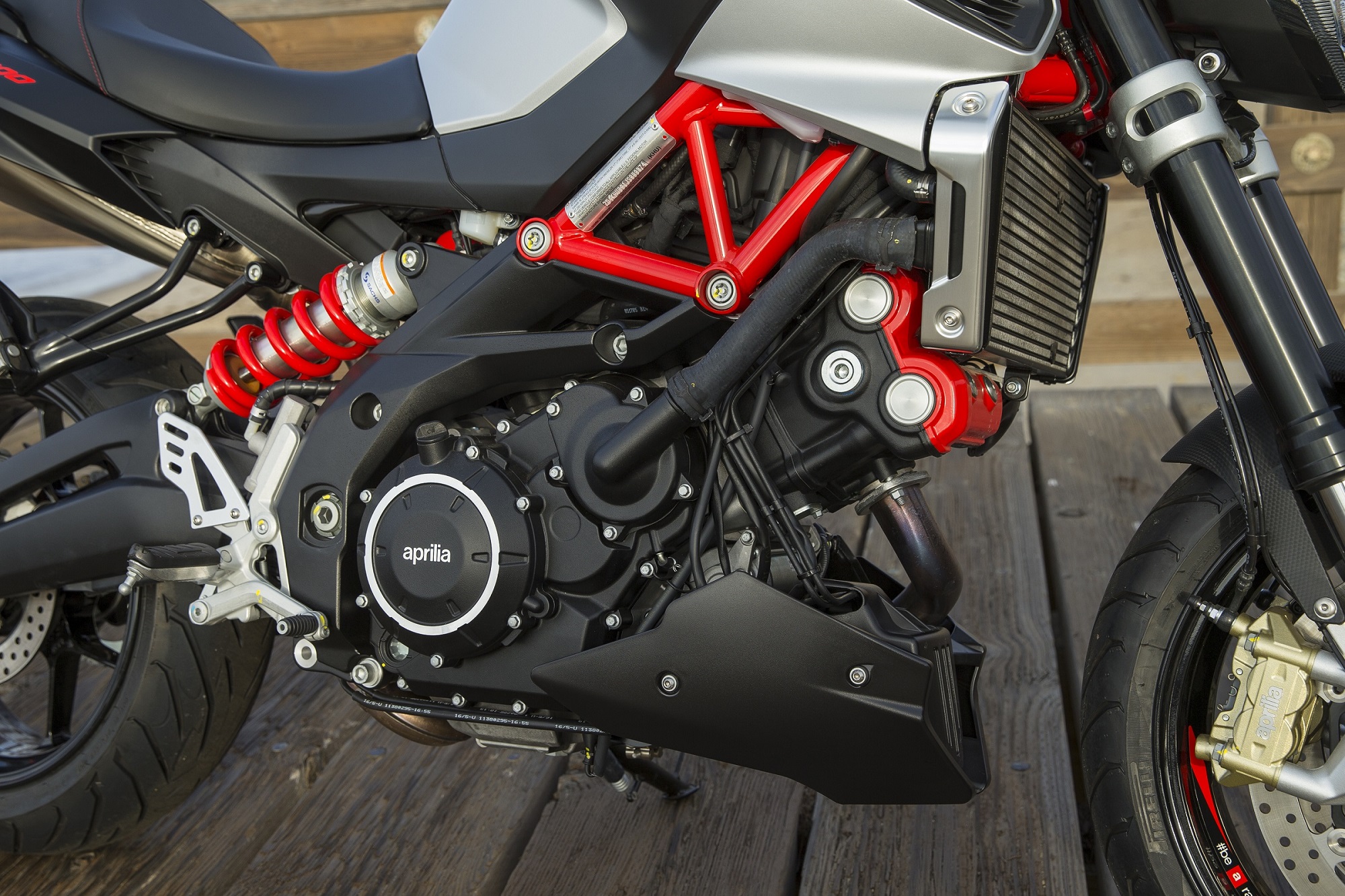
Riding the Shiver 900, you won’t forget there’s a V-twin down below, not a four-cylinder engine. But the vibes are not bothersome. Photo by Kevin Wing.
And now, a dash of sophistication
While the engine and electronic rider aids are the most substantive changes, the most visible upgrade to the Shiver 900 is the TFT full-color dash. The display includes a bar graph tachometer across the top. Below that are displays for speed, gear indicator, engine temperature, the ride mode and traction control level you’ve selected, and other information you can scroll through using the controller on the left side of the handlebar.
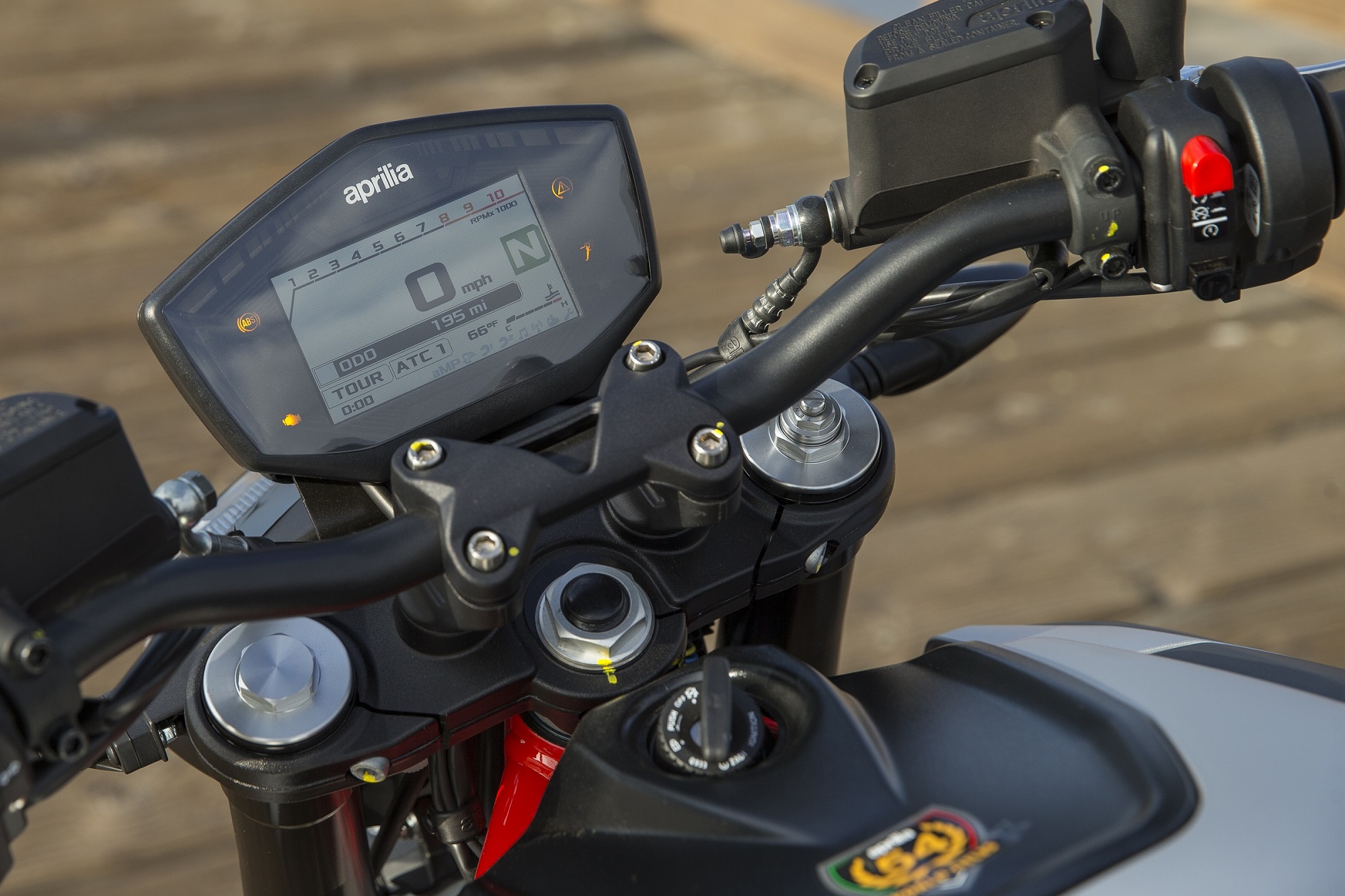
The TFT instrument panel is one of the upscale features on the new Aprilia Shiver 900. Photo by Kevin Wing.
An option is the Aprilia Multimedia Platform, which lets you tie your Bluetooth device into the dash so you can control your phone or helmet communicator through the handlebar-mounted switch. There’s a row of small icons across the bottom of the TFT display for that function.
The dash looks great. I have to believe that all motorcycles except the budget models will eventually have this kind of display. The only complaint I had was that the small tachometer is hard to read at a glance, when I’m way more worried about the next corner coming up rather quickly. Part of that is the upright seating position, which means I have to divert my gaze quite a distance to look down at the dash. In practice, I found a simple solution to that problem, however. Aprilia put a series of white, yellow and red shift lights across the top of the panel, and I used those, visible in my peripheral vision, to decide when to shift when I was trying to ride harder than I should.
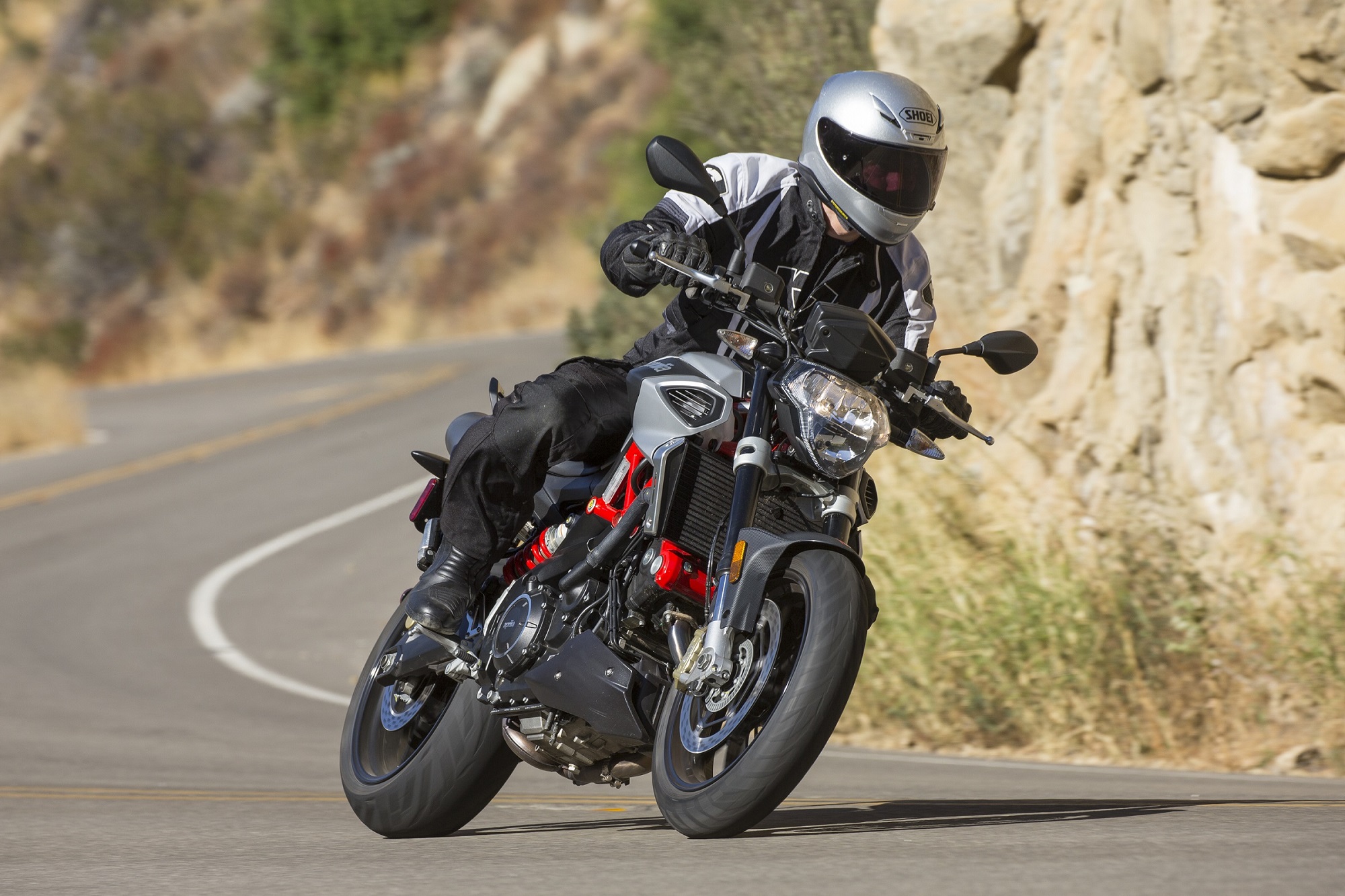
I rode the Aprilia Shiver 900 on the great roads in Los Padres National Forest near Ojai. The torquey engine makes it fun in the mountain curves like these. Photo by Kevin Wing.
In addition to the flashy dash, Aprilia gave the Shiver some premium touches such as metal braided brake lines and adjustable levers on both sides. Aprilia reduced the effort on the hydraulic clutch by 15 percent. Floating dual 320 mm discs up front are grabbed by radial-mount, four-piston calipers. The ABS can be turned off.
The inverted fork is adjustable for preload and rebound damping and the rear shock is adjustable for preload only. Travel is 5.1 inches (130 mm) both front and rear. The lighter, three-spoke wheels wear conventionally sized 120/70R17 front and 180/55R17 rear tires, so the Shiver rider will have a wide choice of replacement rubber when the time comes, whether you want to go sportier or longer lasting. Given its intended mission as an all-around street bike, it comes stock with Pirelli Angel GT sport-touring tires, which is probably a great choice for a wide range of riders.
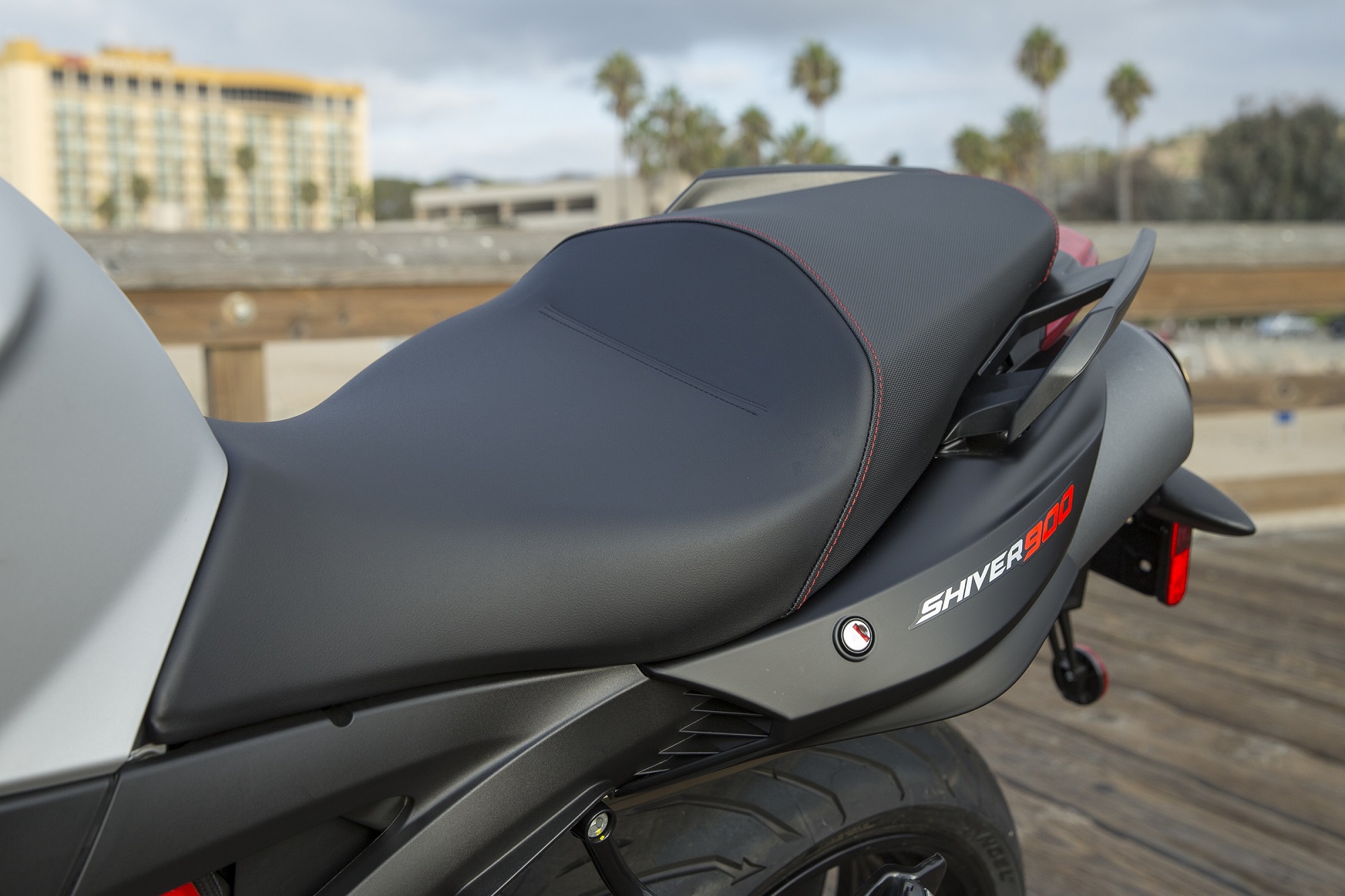
The seat is reasonably comfortable and just under 32 inches high. Along with the upright ergonomics, it makes for an easy-to-ride motorcycle, though I wouldn’t call the Shiver a beginner bike, by any means. Photo by Kevin Wing.
Who will like the Aprilia Shiver 900
Since I first rode the original Shiver (you don’t forget a name like that, even if the bike isn’t the most outstanding) 10 years ago, I’ve seen very few of them on the road. Is the new, more powerful version enough of a better deal to change that? Who might buy a Shiver and live happily ever after?
Fundamentally, this is the kind of motorcycle I enjoy: A torquey, practical, naked bike with neutral and upright ergonomics and enough power to be fun. There are some inherent drawbacks with that kind of motorcycle, and then there are a couple of problems specific to the Shiver.
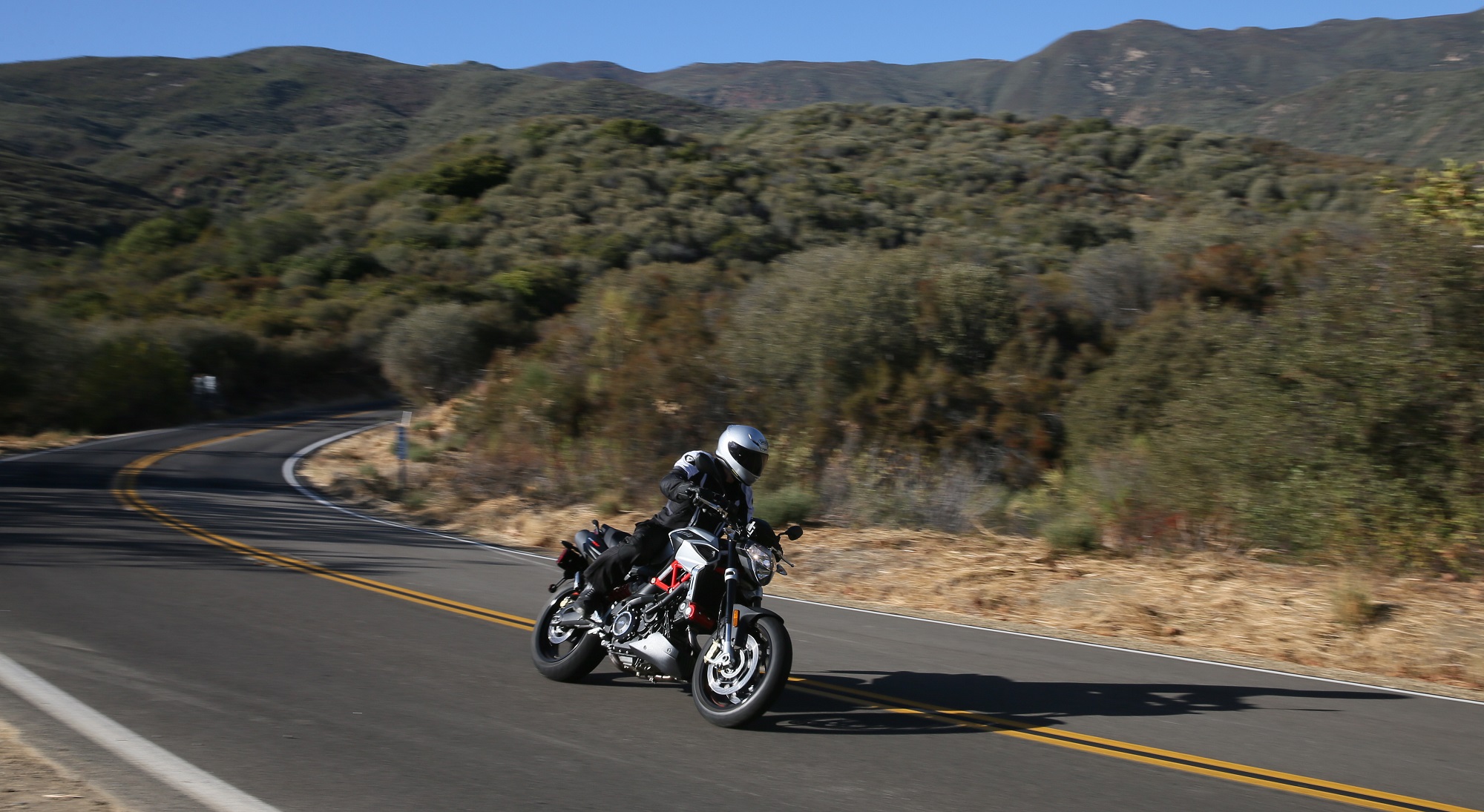
Lack of wind protection and difficulty mounting soft luggage, due to the underseat exhausts, are the main drawbacks to using the Shiver 900 for long rides. The riding position is comfortable. Photo by Brian J. Nelson.
The positive is that a naked bike like this works for everything from a weekend of sport-touring to daily commuting, and I wouldn’t hesitate for a minute to put a set of sticky sport tires on the Shiver and take it to a track day. That said, a naked bike like the Shiver challenges you to find creative ways to carry necessities, whether for a weekend trip or the daily ride to work. The Shiver makes it harder with its underseat exhaust, limiting your options for rear luggage. That doesn’t mean you can’t travel on the Shiver. I’ve taken some weekend camping trips on inappropriate motorcycles (and once dropped a sleeping bag on I-40 in Tennessee as a result), but the Shiver would be one of the most difficult ones yet, even for a minimalist camper such as myself.
Wind protection is the other shortcoming of this style of bike, if you’re planning to do long miles. You can do it. I’ve done it. Just know what you’re getting into.
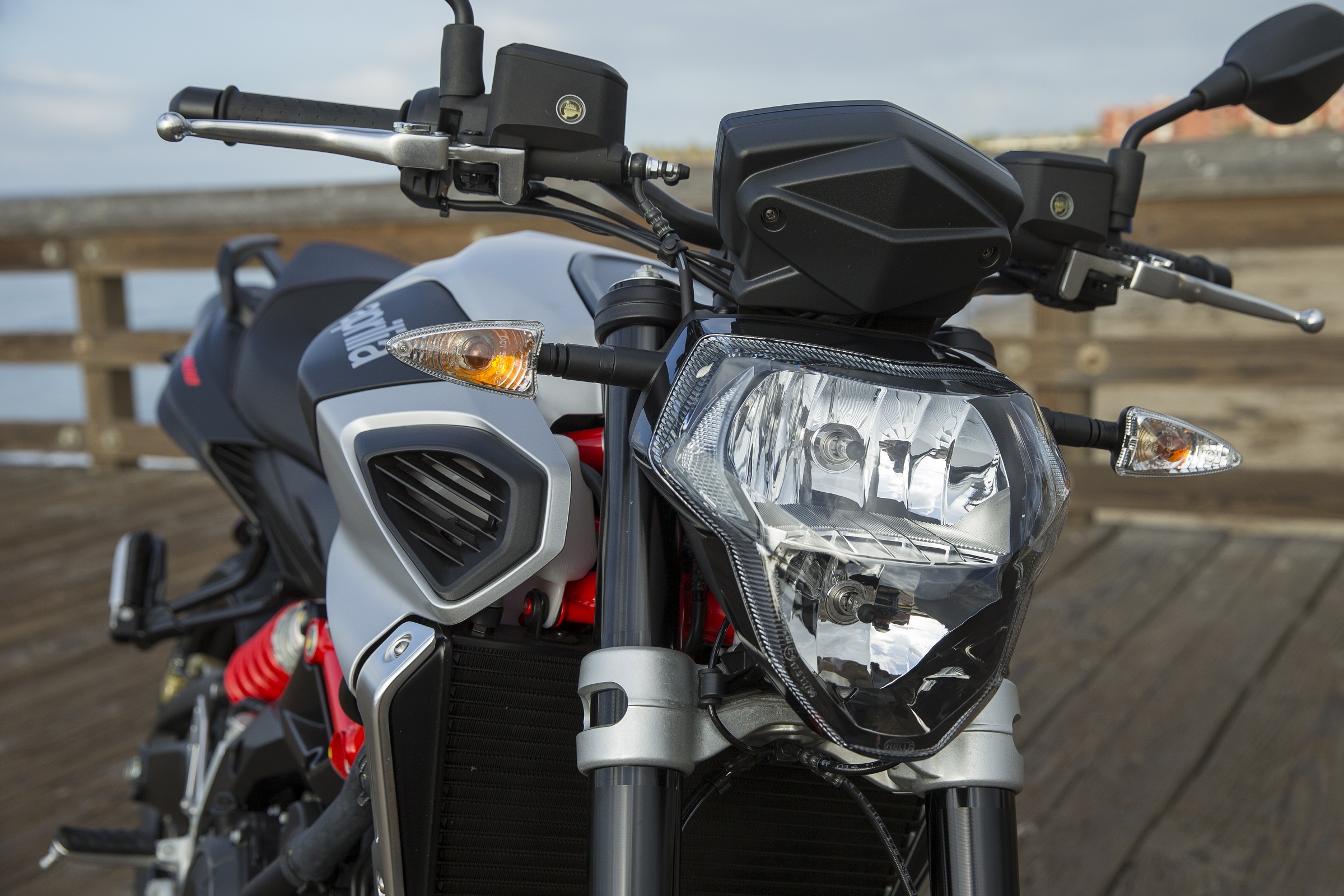
The Aprilia Shiver 900 is nicely styled without going too far. Ten years ago, the headlight looked strange. I compared it to a Salvador Dalí painting of a melting clock. Today, it’s nearly the norm. Photo by Kevin Wing.
But if you just want a stylish city bike, the Shiver’s good looks, premium touches and flexible power make it an option worth considering. The only area where I feel the Shiver comes up a little short of my expectations is the weight: Aprilia says 480 pounds with a full tank, and I’d expect a modern, naked V-twin to come in a good bit lighter.
The real reason I think I’ve seen so few Shivers on the road since that first test ride a decade ago has less to do with the attributes of the motorcycle itself and more to do with price, partially, and Aprilia’s support network, mainly. At $8,999, the 2008 Aprilia SL750 Shiver was no bargain. The 2018 Aprilia Shiver 900, with the added electronics and more power, is a better deal at $9,399.
Ten years ago, the acquisition of Aprilia by the Piaggio Group was just a few years in the rearview mirror. Unfortunately, even a decade later, the dealer presence in the United States is still spotty. Most major cities have a dealer, but if you live elsewhere, you might have to travel hours just to see a Shiver. And then you start thinking about what happens if you need service. And you hear stories about the long delays some owners have experienced in getting parts from Aprilia.
Considering there’s such strong competition in this class, I think that’s why you don’t see many mid-sized Aprilias in the wild in the United States. Just to name a few examples, it’s a lot easier to go buy a Triumph Street Triple R, which is a little more powerful than the Shiver and has a similar TFT dash. Or a Yamaha FZ-09 or Kawasaki Z900, if you want more power for less money and don’t mind current Japanese style trends. Or, the more common Italian competition, the Ducati Monster 821.
I’ve ridden most of those bikes and there’s not a bad one in the bunch. That kind of competition means the Shiver is likely to remain a relatively rare sighting, even though, with more power and features, it stands on its own merits as a motorcycle worth considering in its class. And a better deal than it was 10 years ago.
 2018 Aprilia Shiver 900 specs |
|
|---|---|
| Engine | 90-degree, liquid-cooled V-twin |
| Displacement | 896.1 cc |
| Compression ratio | 11.5:1 |
| Front brakes | Dual 320 mm rotors, four-piston radial-mount caliper |
| Rear brake | Single 240 mm rotor, single-piston caliper |
| Wheelbase | 57.7 inches |
| Wet weight | 480 pounds |
| Seat height | 31.9 inches |
| Fuel capacity | 3.9 gallons |
| U.S. MSRP | $9,399 |
